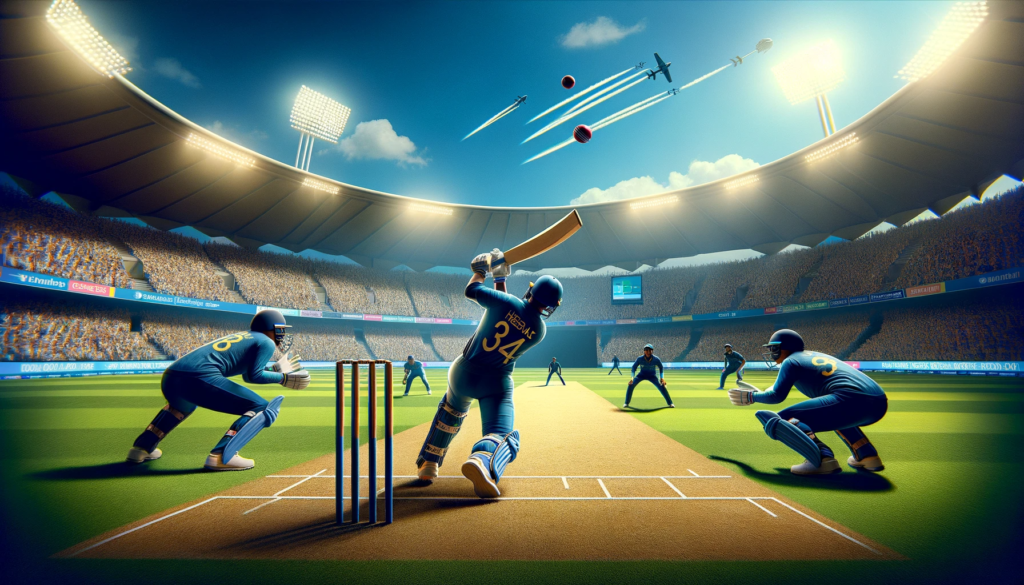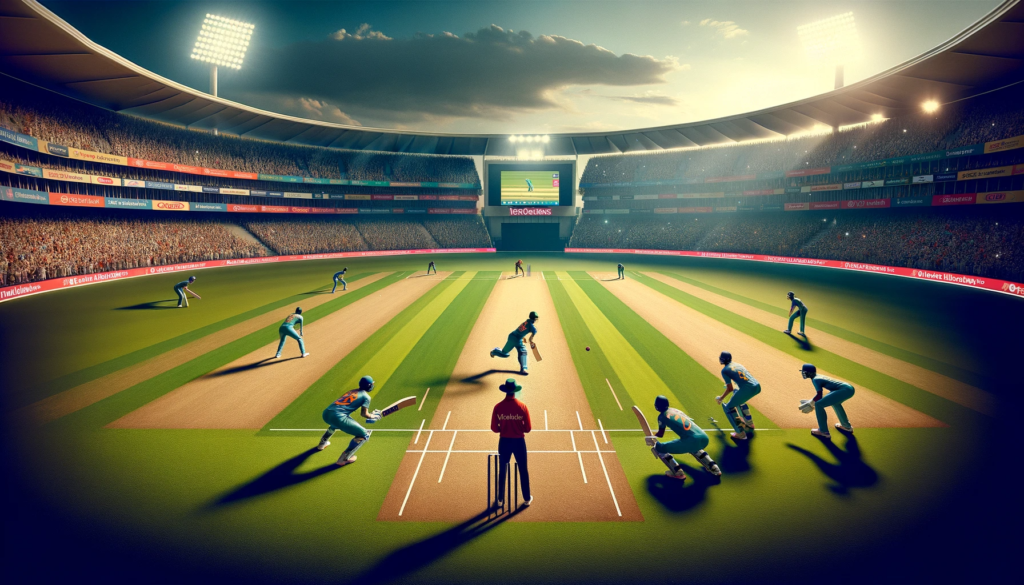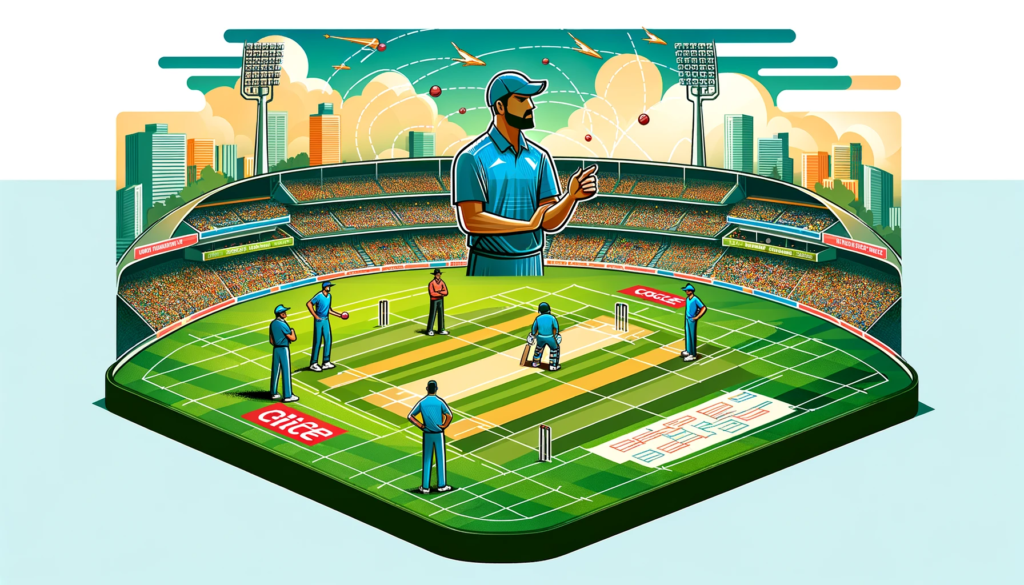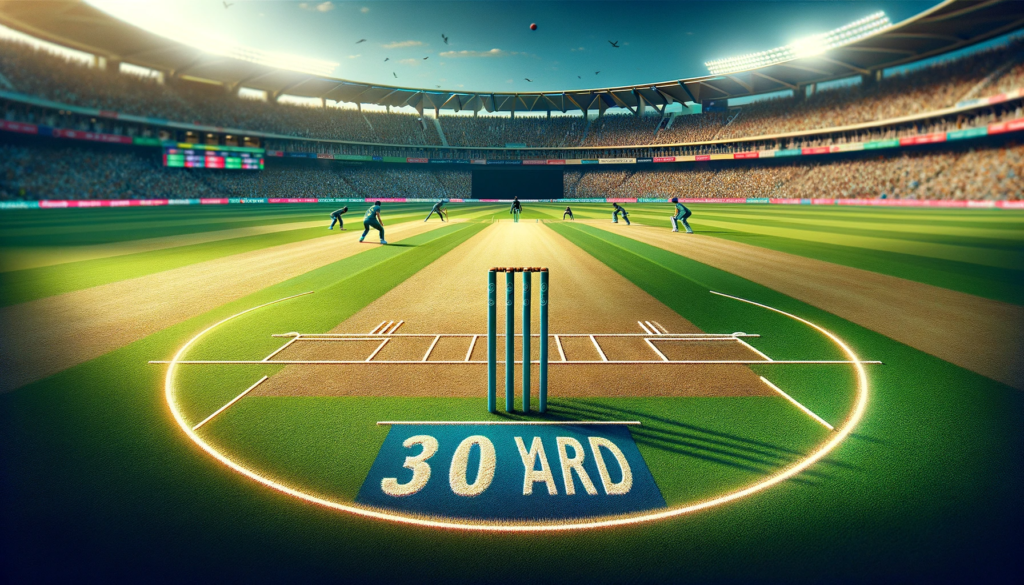What is the Powerplay in Cricket? Powerplay Rules in ODI Cricket & T20 Cricket
Cricket is a nuanced sport with intricate rules and tactics. One strategic aspect that causes frequent confusion is the ‘Powerplay’ – a term ubiquitous in limited overs cricket. Powerplay refers to a set of fielding restrictions during certain overs which impact the complexion of ODI and T20 matches. This article will provide an in-depth explainer of powerplay rules and how it influences the outcome in cricket’s shorter formats.
Understanding powerplays is key to appreciating the ebbs and flows of a limited overs contest. It adds an extra layer of strategizing between teams on when to impose these fielding restrictions to maximum effect. Let’s dive into the origins of powerplay and how ODI and T20 cricket have tailored it through the evolution of limited overs cricket.
What is the Powerplay in Cricket?
The powerplay in cricket refers to a rule that places restrictions on the number of fielders allowed outside the 30-yard circle during certain overs of an ODI or T20I innings. This gives the batting team a major advantage as they can exploit the fielding gaps more easily by freely hitting boundaries.

During the powerplay overs, only 2 or 3 fielders are allowed outside the inner 30-yard circle, compared to the standard 4 or 5. This shrinks the outfield size and prevents run-saving tactics. The aim is to help boost scoring rates through aggressive strokeplay during the powerplay.
A Brief History of the Powerplay Rule
Powerplay rules were first introduced by the International Cricket Council (ICC) in limited overs cricket in 2005. It has undergone several iterations over the years in ODIs and T20s to find the optimal balance between bat and ball:
- Initial powerplays in 2005 allowed only 10 overs mandatory at the start of an ODI innings when 2 fielders were allowed outside.
- The rule was tweaked in 2008 to split this into three powerplays of 10-2-3 overs. Teams had strategic flexibility on when to take each powerplay.
- In 2011, this changed to two mandatory powerplays of 10-5 overs to start an ODI innings.
- For T20 cricket, it was 6 overs mandatory powerplay when 2 fielders were allowed outside during this period.
- Currently, ODIs have a single 10 overs powerplay at the start. T20Is have mandatory 6 over powerplay.
Through these changes, powerplays have been balanced to give matches an ebb and flow between bat and ball.
The Rules of Power Play in ODI and T20 Cricket

Powerplay Rules in ODI Cricket
Let’s look at how powerplays currently work in 50 over ODI matches:
First Powerplay
The mandatory powerplay starts from overs 1-10. Only 2 fielders are allowed outside the 30-yard circle during these first 10 overs.
Middle Overs
From overs 11-40, a maximum of 4 fielders are allowed outside the circle.
Death Overs
In overs 41-50, a maximum of 5 fielders can be placed outside the 30-yard circle to defend boundaries.
So in summary, batting teams enjoy a huge advantage during the first powerplay when attacking the field spread is easiest. The middle overs allow tighter bowling and run choking with more fielders outside. The death overs enable bowlers to defend boundaries.
Powerplay Rules in T20 Cricket
Powerplay rules for a 20 overs per side T20 match are:
First Powerplay
A mandatory 6 over powerplay. Only 2 fielders allowed outside the circle during overs 1-6.
Middle Overs
No more than 5 fielders can be placed outside the 30-yard circle between overs 7-16.
Death Overs
In overs 17-20, a maximum of 5 fielders are allowed outside to prevent boundaries.
T20I powerplays provide exciting bursts of free scoring in the first 6 overs. The remaining overs allow tighter bowling and strategic placement of boundary riders.
How Does Powerplays In Cricket Influence Batting Strategy?
The powerplay overs allow teams to maximize scoring with aggressive batting when field spreading is restricted.
During the first powerplay, batters can freely target boundaries, especially by attacking any short deliveries with pull shots. Powerplays allow teams to get off to flying starts and set a platform for mammoth totals.
Powerhitting tactics using specialized batsmen are common during the first 6 or 10 overs of T20Is and ODIs respectively. Overall, the powerplay enables batting explosions not possible during the middle and death overs.
Impact of Powerplay on Bowling Strategy
For bowlers, powerplays mean containing runs is tougher with field restrictions in place. But they compensate through smart tactics:
- Bowling dot balls becomes critical to keep batters from running away with free hits.
- Mixing up line and lengths to frustrate batters prevents them from getting into a groove during powerplays.
- Bowling to packed inner fields and denying room to free arms prevents boundaries.
- Skilled reverse swing and variations like slower balls can negate powerplays.
- Spin bowling with economical wicket-taking leg spinners provides control.
So in summary, bowling disciplines like spin, swing and cutters allows building pressure to counter attacking batting during powerplays.
Strategic Importance of PowerPlay in Cricket

Tactics for Batsmen and Bowlers
Power Play overs are crucial for both batsmen and bowlers. Batsmen often use this period to score quickly, taking advantage of the limited number of fielders outside the circle. Bowlers, conversely, must be tactically astute, balancing aggression with the need to limit runs.
Case Studies from International Matches
Analyzing different matches where Power Plays have been decisive showcases their impact. Whether it’s a spectacular batting onslaught or a brilliant bowling spell, Power Plays often dictate the tempo of the game.
Field Restrictions During Power Play

Number of Fielders Outside the 30-Yard Circle
During the first Power Play in ODIs, only two fielders are allowed outside the 30-yard circle. This number increases in later phases, presenting different challenges and opportunities for both teams.
Impact on Batting and Bowling Strategies
The field restrictions significantly affect strategies. Batsmen may opt for aerial shots to exploit the gaps, while bowlers and captains must be innovative with their field placements and bowling plans.
The Concept of Batting Powerplay
Historical Perspective
The batting Power Play, now a defunct rule in ODIs, allowed the batting team to choose a period when field restrictions would be relaxed. Its introduction and eventual removal from ODI cricket reflect the evolving nature of the game.
Tactical Use in Modern Cricket
Though no longer used in ODIs, the concept of a batting-centric period remains influential in T20 cricket, where the initial overs are often used for aggressive batting.
Bowling Powerplay: A Double-Edged Sword
Planning and Execution
The bowling team must carefully plan their Power Play overs, selecting the right bowlers and field placements to maximize pressure on the batting side.
Notable Instances in Cricket Matches
Several memorable matches have turned on bowling performances during Power Play overs, highlighting the importance of skillful and strategic bowling during these periods.
PowerPlay in T20 Cricket: A High-Stakes Game

Rules and Regulations
In T20 cricket, the Power Play typically lasts for the first six overs. This period is crucial, often setting the tone for the rest of the innings.
Impact on Match Outcomes
The way teams handle the Power Play in T20 matches can significantly influence the final result, making it a critical phase of the game.
Changes to the Powerplay Rules: A Historical Overview
From 2005 to Present
The evolution of Power Play rules reflects the dynamic nature of cricket. Changes have been made to maintain balance between bat and ball and to keep the game exciting for viewers.
Reactions and Adjustments
Teams and players have continuously adapted to these changes, often altering their strategies to suit the new rules.
PowerPlay Strategies: Captains’ Perspectives
Decision Making Process
Captains play a pivotal role in deciding how to utilize Power Plays, making strategic decisions that can alter the course of the game.
Influential Captains and Their Approaches
Examining the strategies of successful captains in Power Play situations provides insights into the tactical depth of cricket.
PowerPlay in Major Tournaments: The Cricket World Cup and Beyond
Memorable PowerPlay Moments
Major tournaments like the Cricket World Cup have witnessed some iconic Power Play phases, often defining the outcome of crucial matches.
Analysis of Winning Strategies
Understanding how winning teams have utilized Power Plays gives a glimpse into the strategic thinking at the highest level of the game.
Conclusion: Why Powerplay Adds Excitement to Cricket
In conclusion, the powerplay rules in limited overs cricket provide a thrilling ebb and flow between bat and ball. It enables aggressive batting without being reckless and expansive strokeplay balanced by skillful bowling.
Powerplays require strategic nuance regarding when to take it and how to maximize its benefits. Fans love watching explosive power hitting during field restrictions. It results in high adrenaline contests, especially when chases go down to the wire.
The powerplay makes cricket a far more dynamic battle between equals. It gives bowling a fighting chance to restrict run scoring through unrelenting discipline. Powerplays exemplify how tactical innovations keep cricket engaging across formats.
Watch Cricket Live Streaming at SmartCric
Smartcric.blog offers an exceptional live streaming experience for cricket fans, making it easy to stay updated with the latest matches and tournaments. In 2023, it provides real-time coverage of various cricket series, including the Australia tour of India, the New Zealand tour of Bangladesh, the Pakistan tour of Australia, and more. The platform caters to various formats like Test matches, ODIs, and T20 cricket, ensuring fans don’t miss any action. With its user-friendly interface and high-quality broadcasts, Smartcric.blog is a popular choice for cricket enthusiasts looking to watch live games conveniently on their devices.





